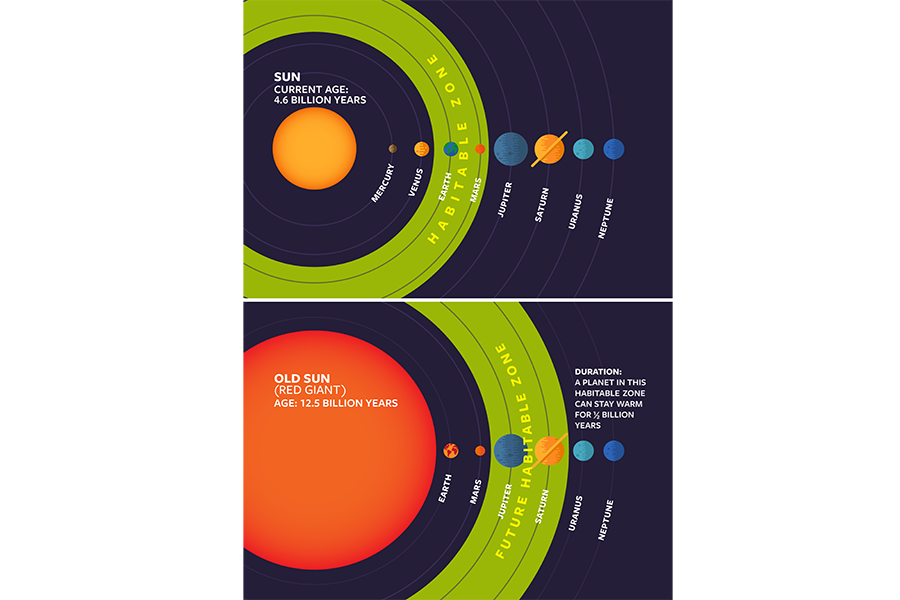Are we pointing telescopes in the right direction to find alien life?
Loading...
In their search for extraterrestrial life on planets similar to ours, perhaps astronomers should look in unexpected places: near aging stars that balloon to epic proportions in their senior years, thereby heating up previously frozen worlds around them, according to new research published in the Astrophysical Journal.
Using space- and ground-based telescopes, astronomers usually look at habitable planets around middle-aged stars like our sun, which is 4.5 billion years old. This technique is based on the only habitable planet astronomers know of, Earth, and the distance between it and our sun – called the Goldilocks zone or the habitable zone – that allows for the perfect temperature to sustain liquid water, thought to be a prerequisite for life on any planet.
But astronomers from Cornell University's Carl Sagan Institute modeled the conditions necessary for life around these dying, so-called red giant stars, and they say it's possible that stars twice the age of our sun, which are much bigger and brighter, could radiate enough heat to the outer, frozen edges of their solar systems to expand the habitable zone around them. These stars could give once-frigid planets in their system a new chance, thawing their surfaces and potentially revealing life in their defrosted oceans.
"I hope that this will actually spark an effort by people who look for planets, to also look at these old stars now," Lisa Kaltenegger, astronomy professor and director of the Carl Sagan Institute, told Space.com. Nearly two dozen aging stars meet the life-sustaining criteria right now within 100 light-years of our own solar system, she said.
"Because if you could find signatures of life on such an evolved planet — a de-frozen planet — that would tell you that (life) could get started subsurface, and that would be an amazing part of the story," said Dr. Kalternegger, who published the findings Monday along with colleague Ramses M. Ramirez.
In a few billion years, our own sun will start to decay and run out of hydrogen fuel at its core, leaving the inert helium ash that has built up to become unstable and collapse under its own weight. As a result, the sun's core will heat up and get denser, causing the star to swell up to 200 times its current size to become what's known as a red giant. This will likely incinerate Mercury and Venus, and render Earth and Mars toast. But it will also warm distant planets – Jupiter, Saturn, and Neptune - and their moons, creating a new habitable zone.
"Long after our own plain yellow sun expands to become a red giant star and turns Earth into a sizzling hot wasteland, there are still regions in our solar system – and other solar systems as well – where life might thrive," Kaltenegger said in a press release.
So when the sun becomes a red giant, life on Saturn's moon Enceladus and Jupiter's moon Europa could thaw out while the planets lie in the habitable zone for half a billion years before the zone shifts again. That's probably not enough time for life to take hold, as The Washington Post points out, based on the fact that it took half to nearly 1 billion years for life to appear on Earth.
But if life did evolve below the surface of those worlds, especially likely for smaller, dying stars that can smolder in their red giant phase for billions of years, we would possibly be able to find it by detecting the gases it produces, released as the planetary surface thaws.
"It's interesting to think that we have this opportunity to look at an unfrozen world and figure out if life could start under the frozen surface," Kaltenegger told the Post.
Kaltenegger and Dr. Ramirez have submitted a second paper for publication, reports Space.com, in which they provide a list of 23 red giant stars within 100 light years of Earth as targets for planet hunters.








